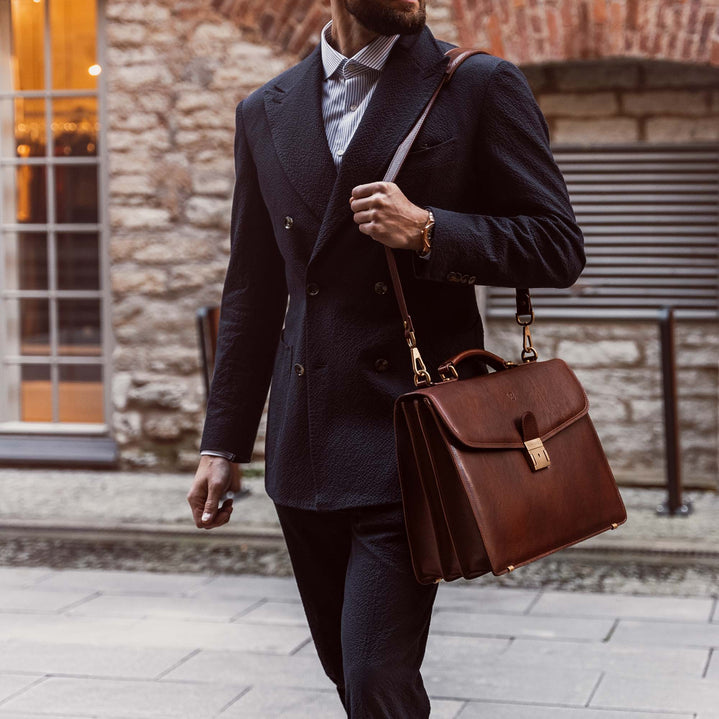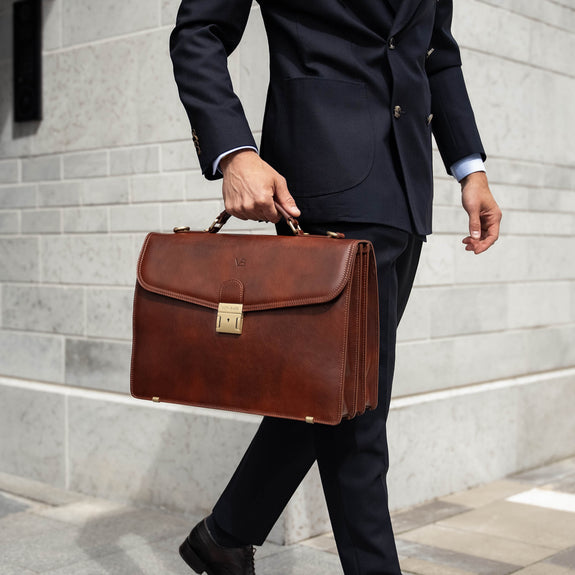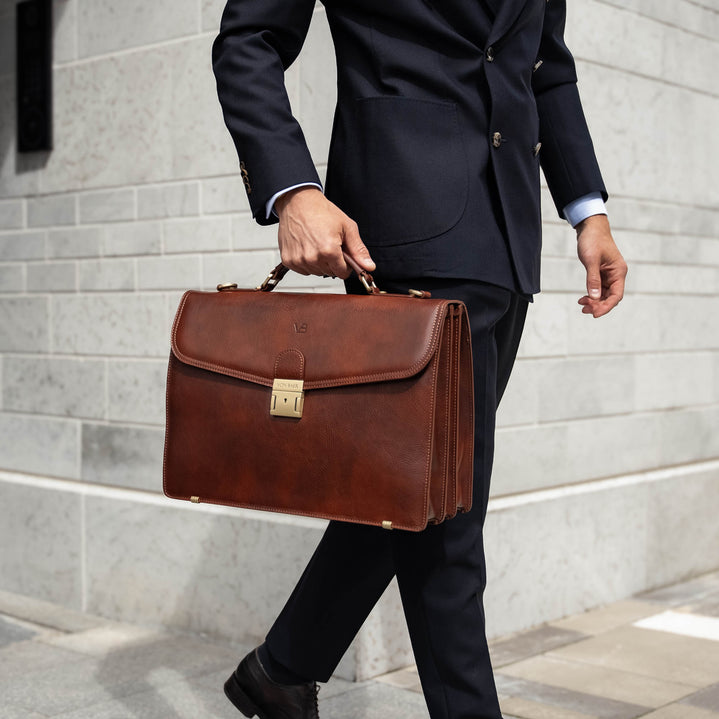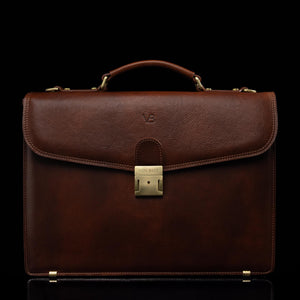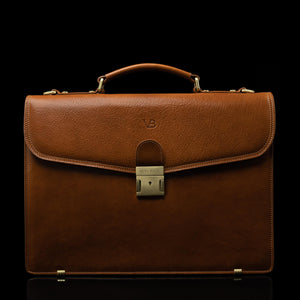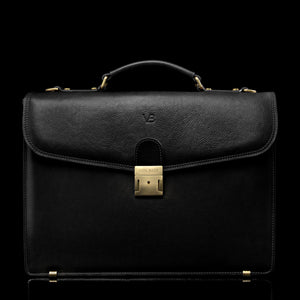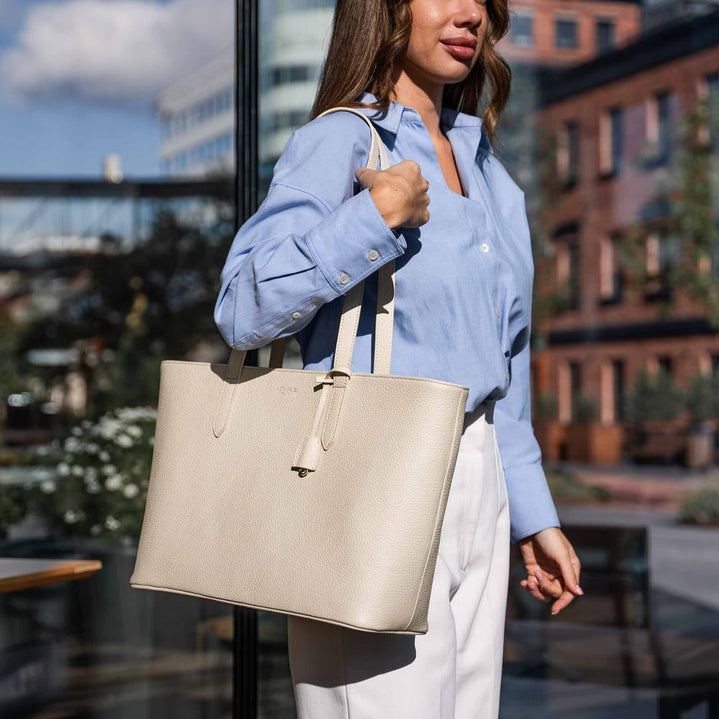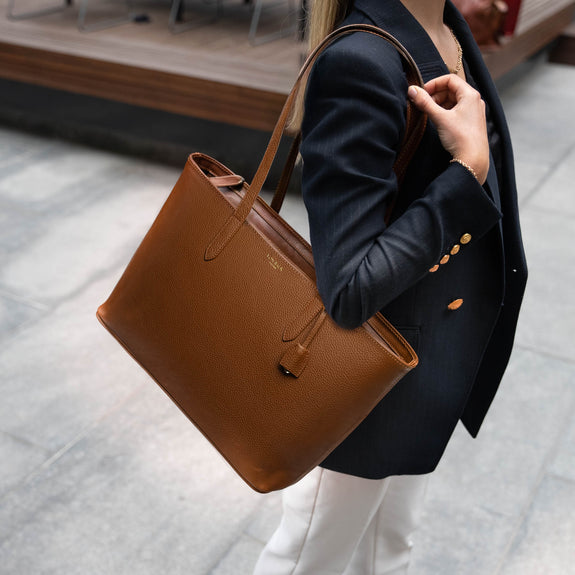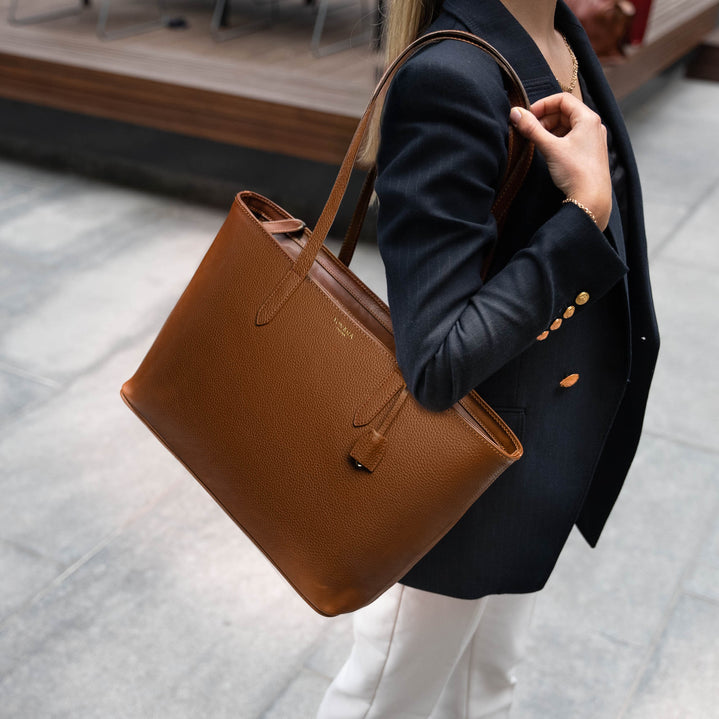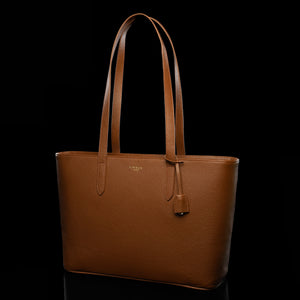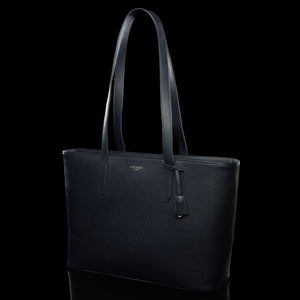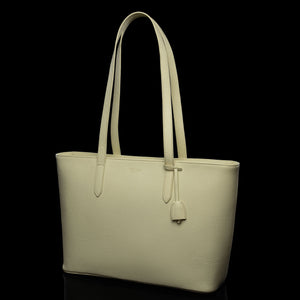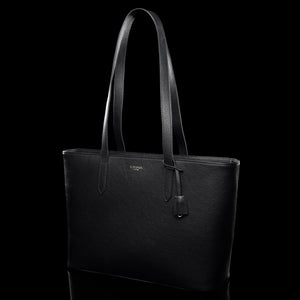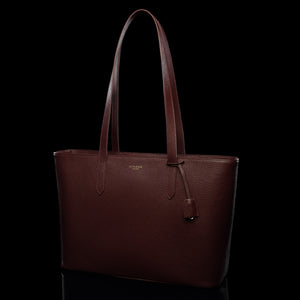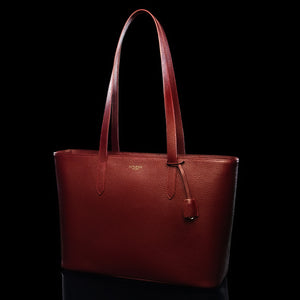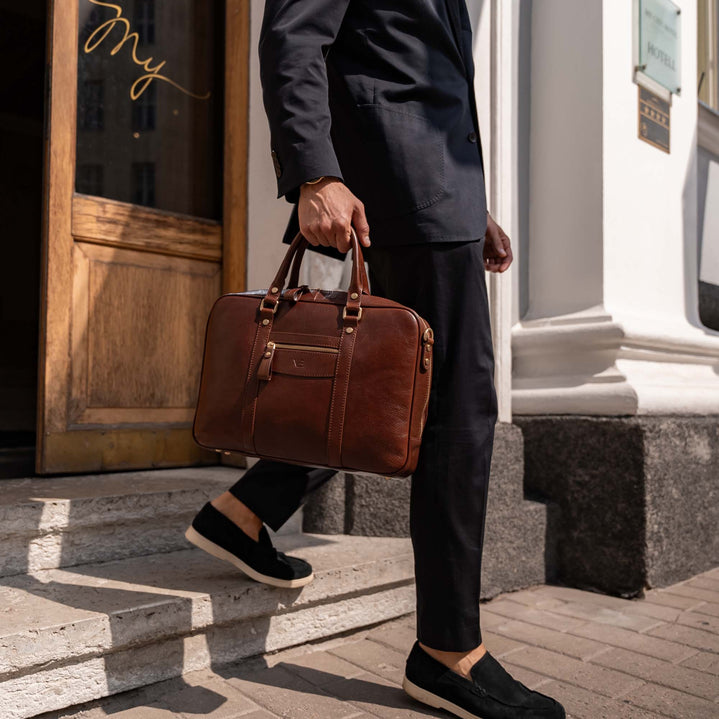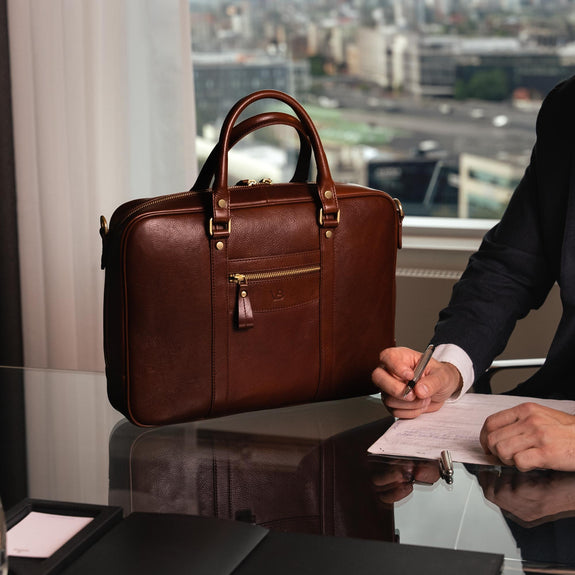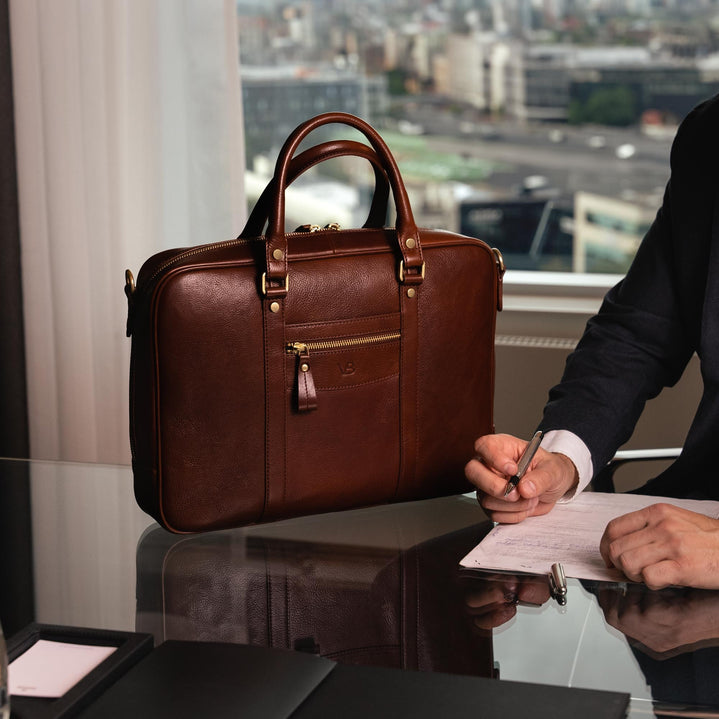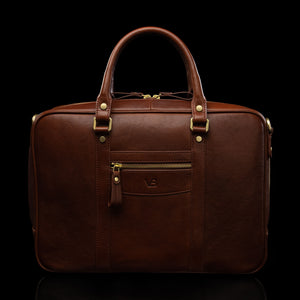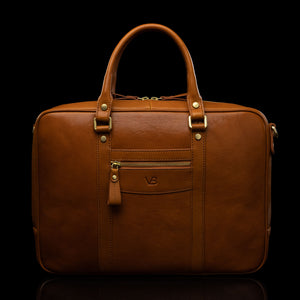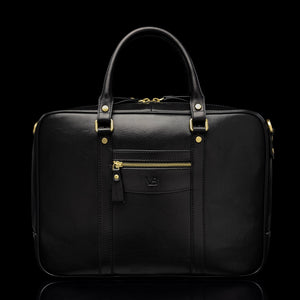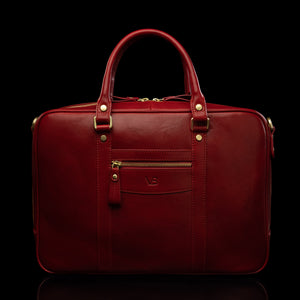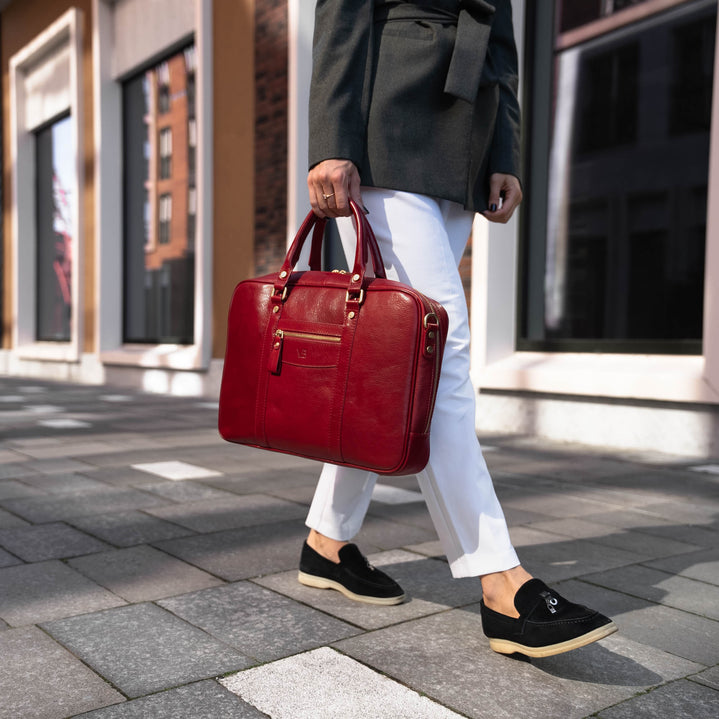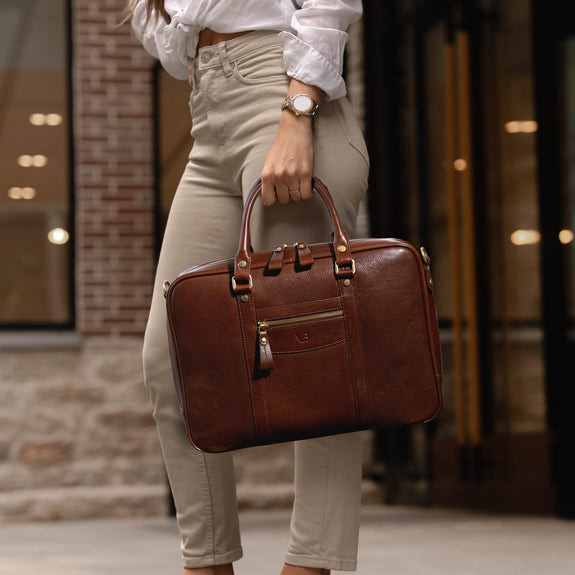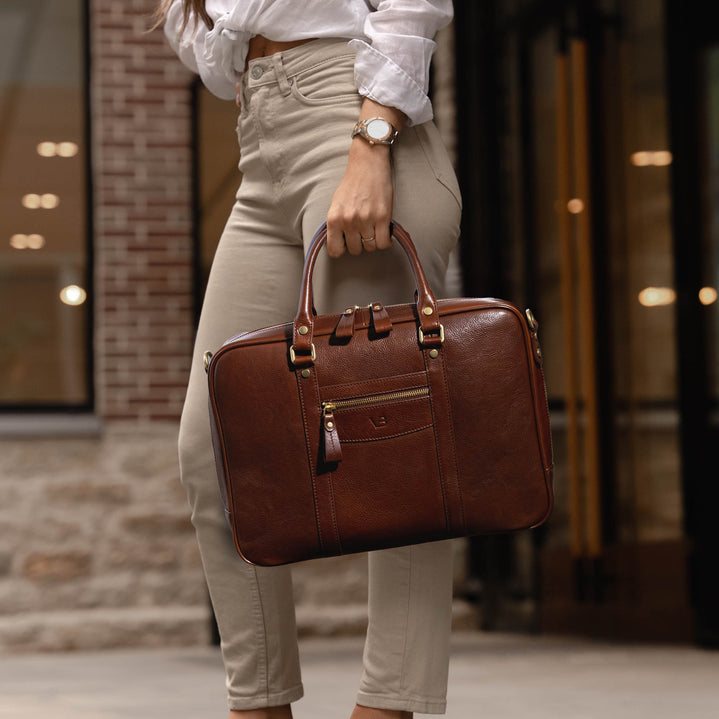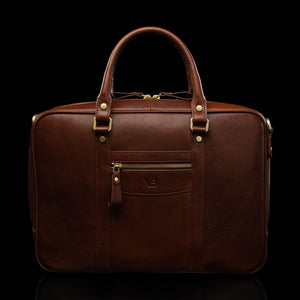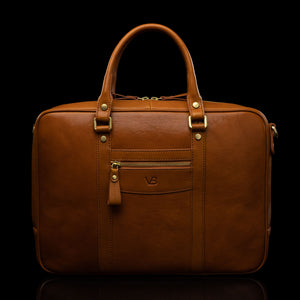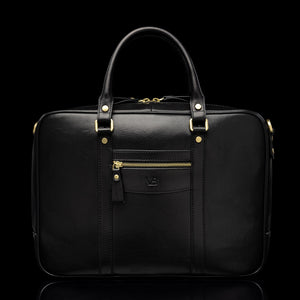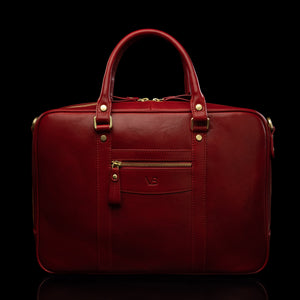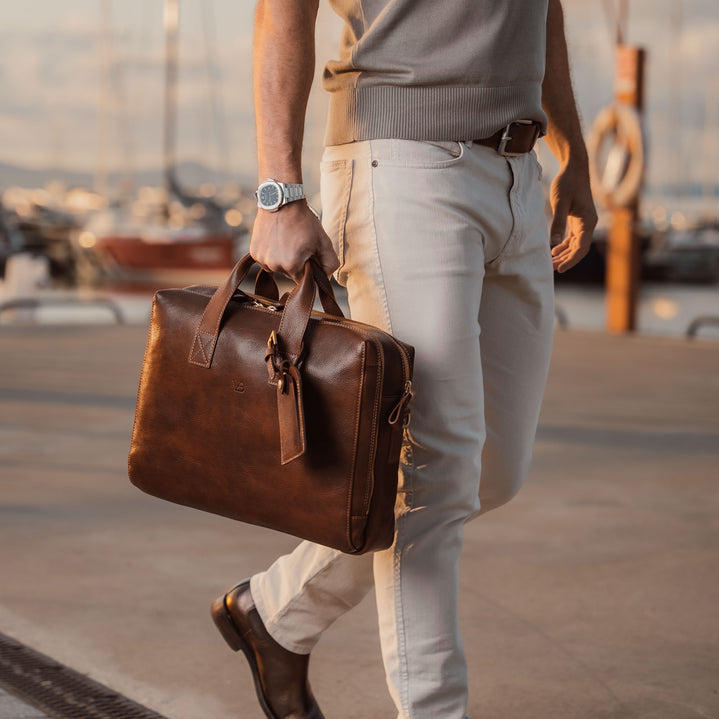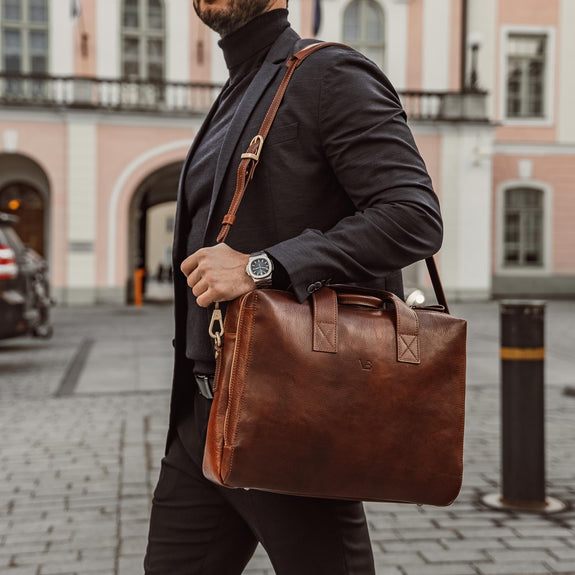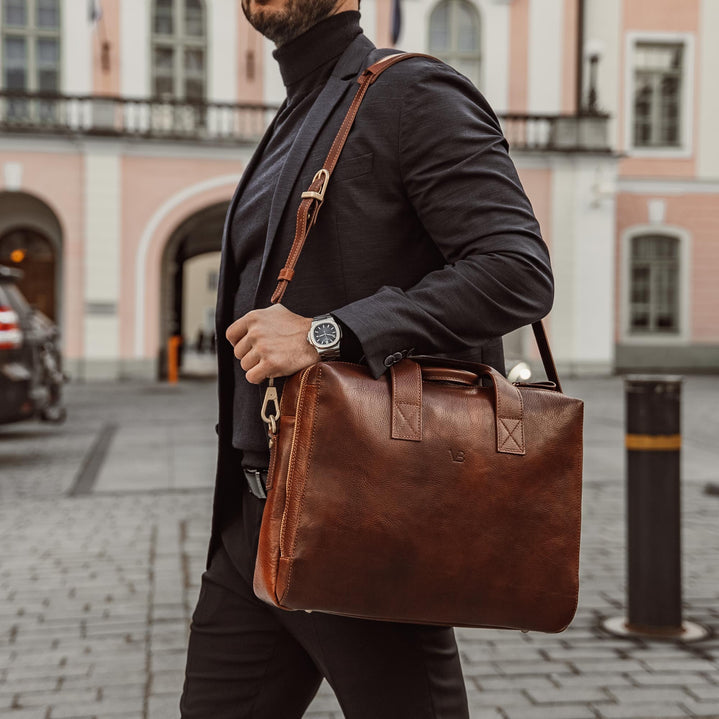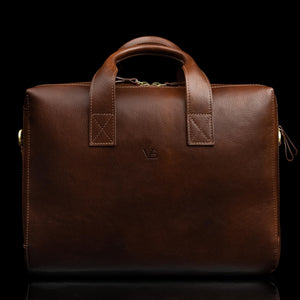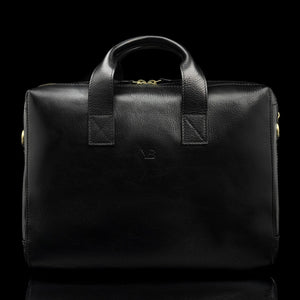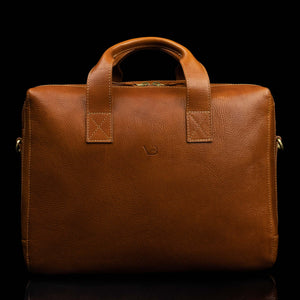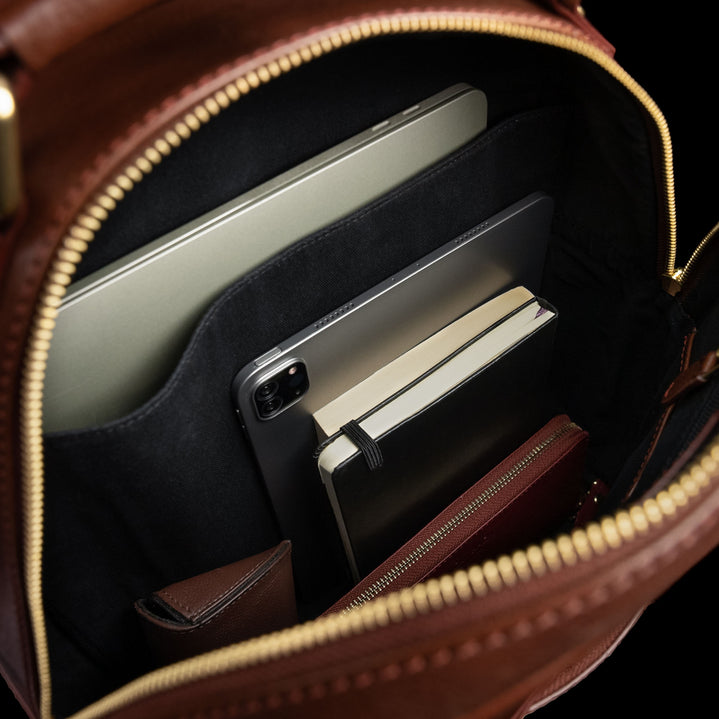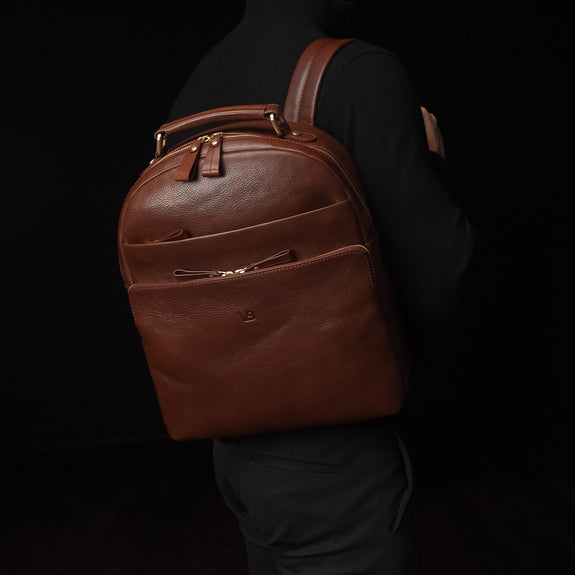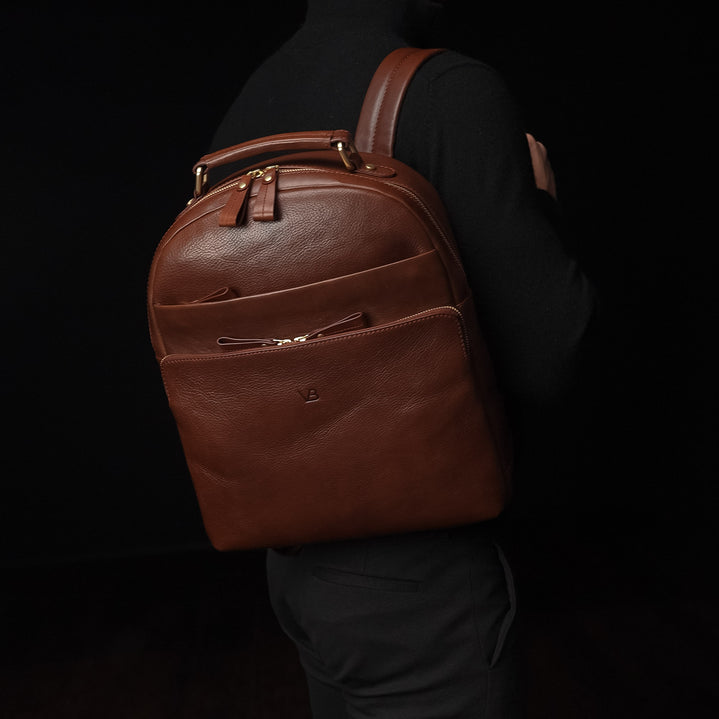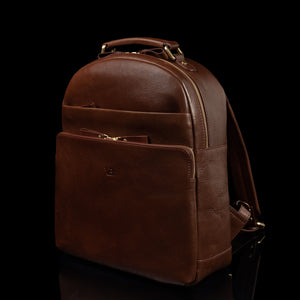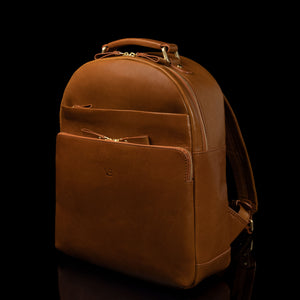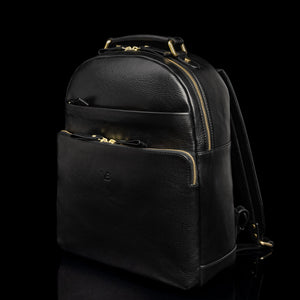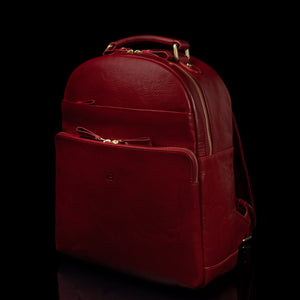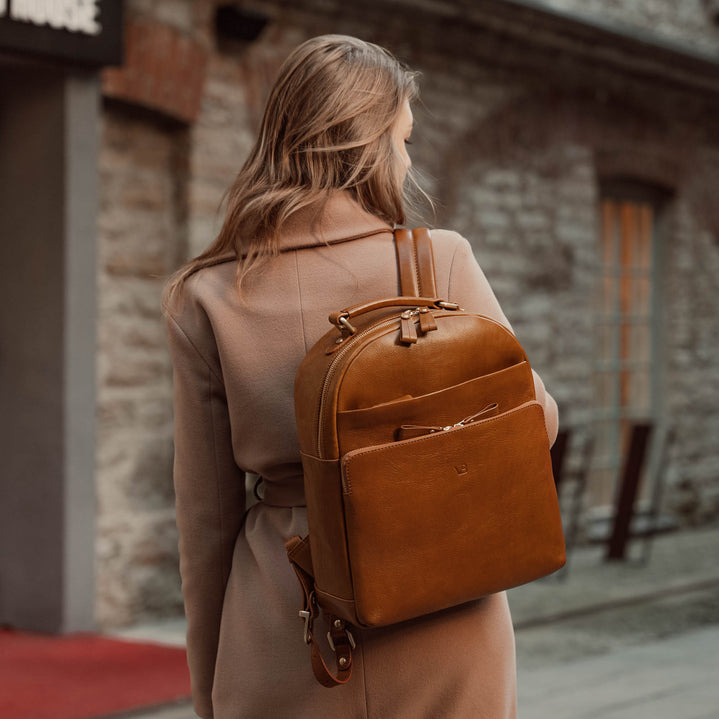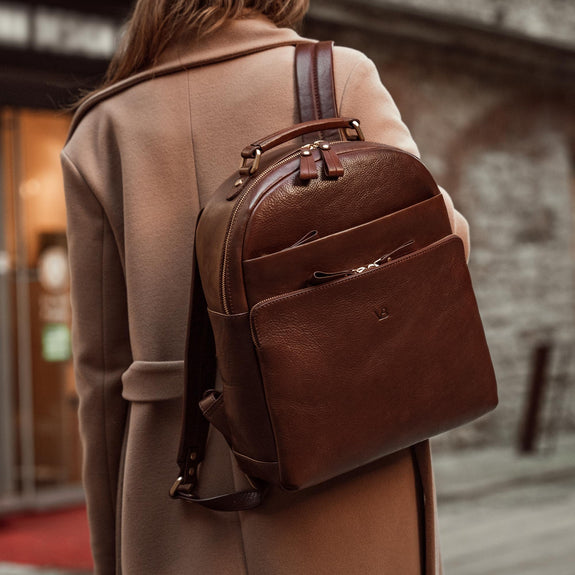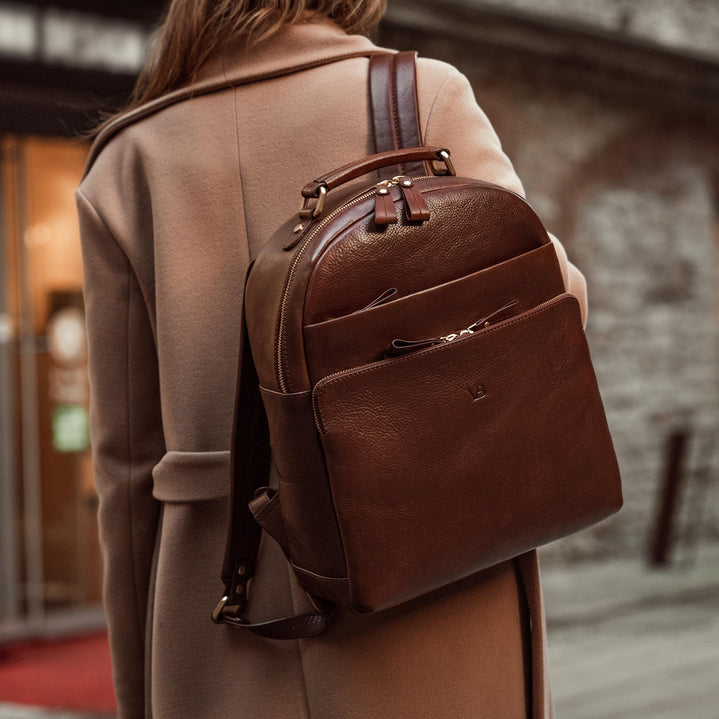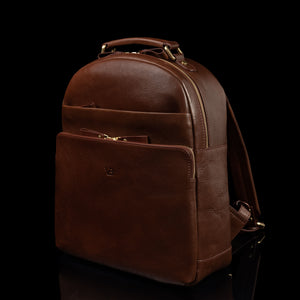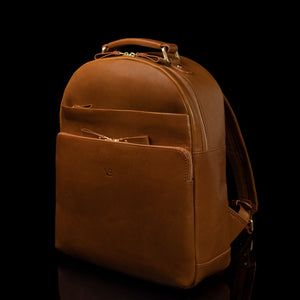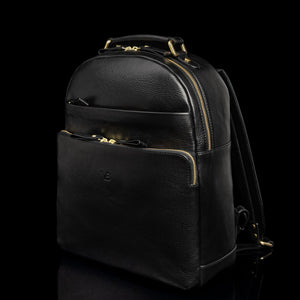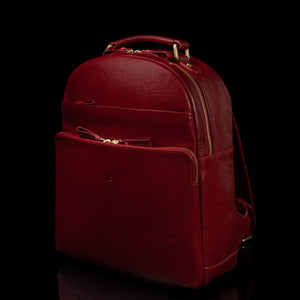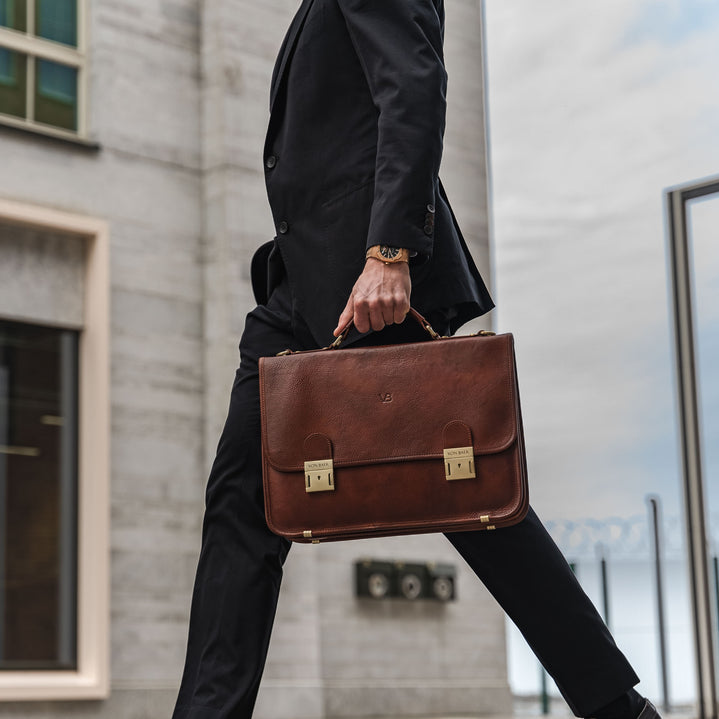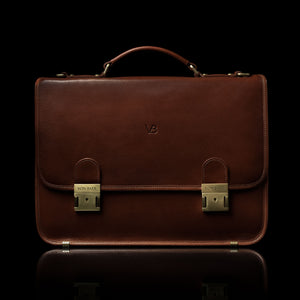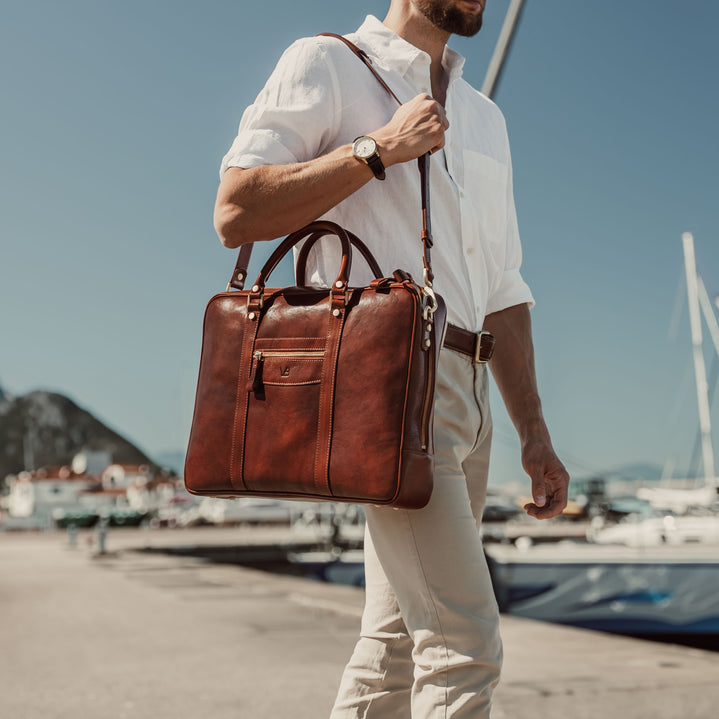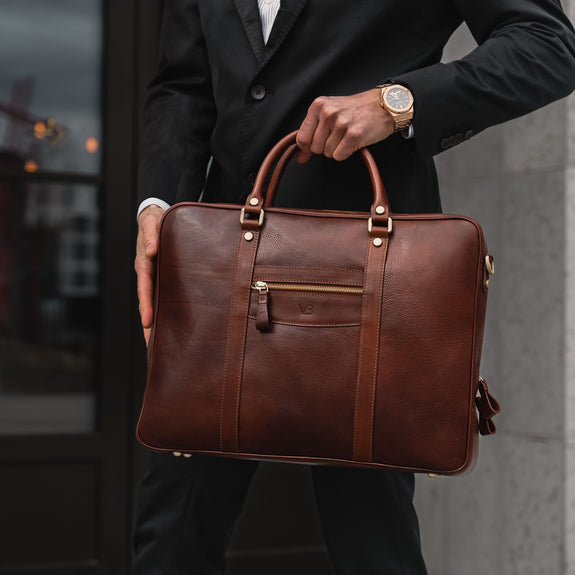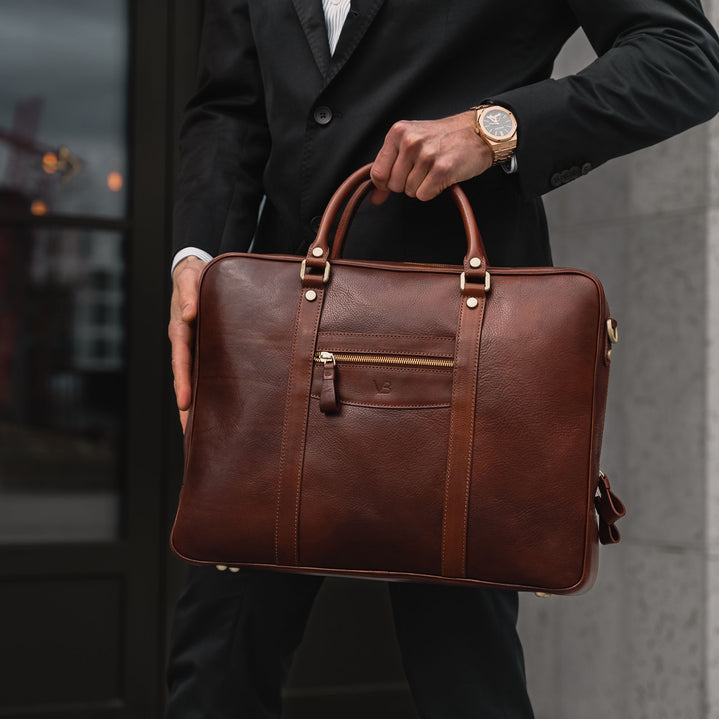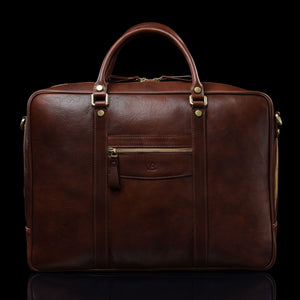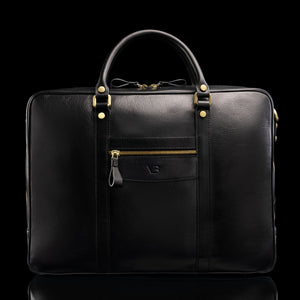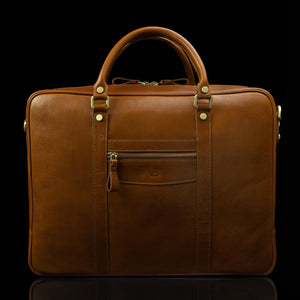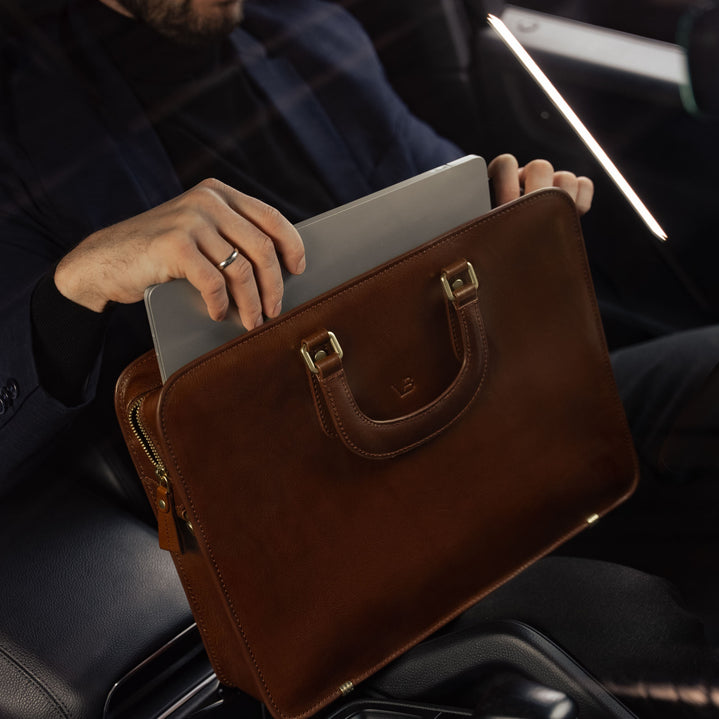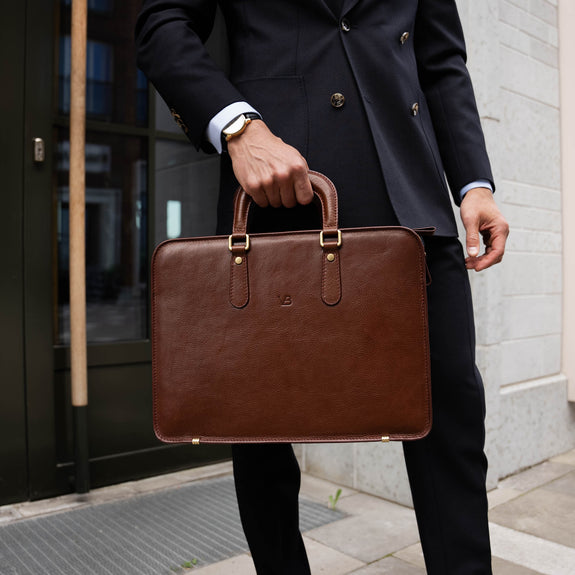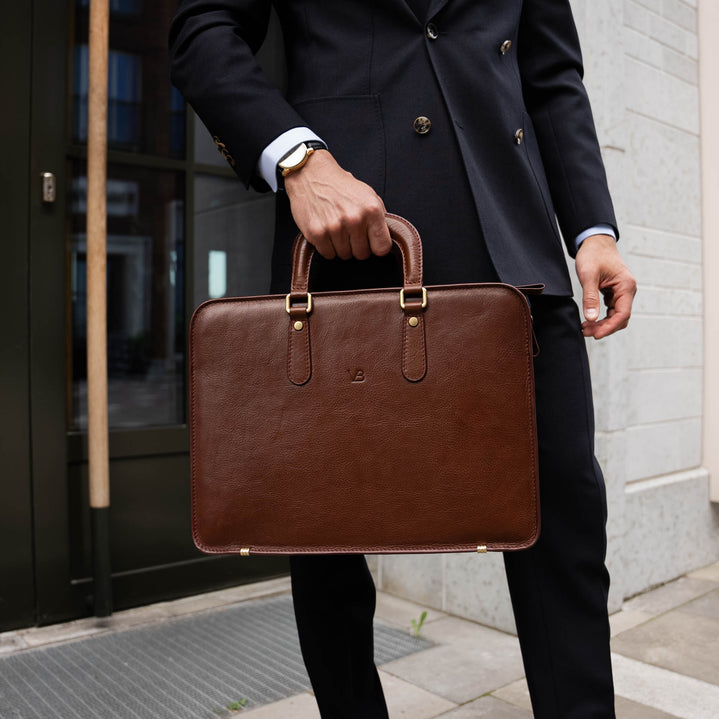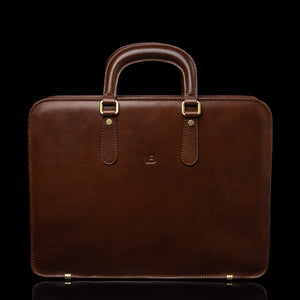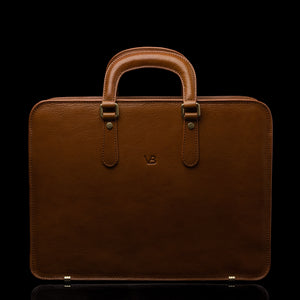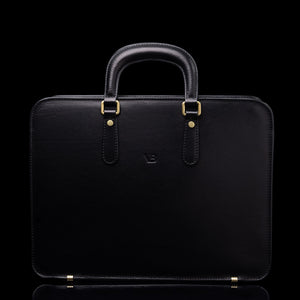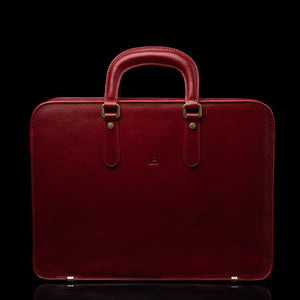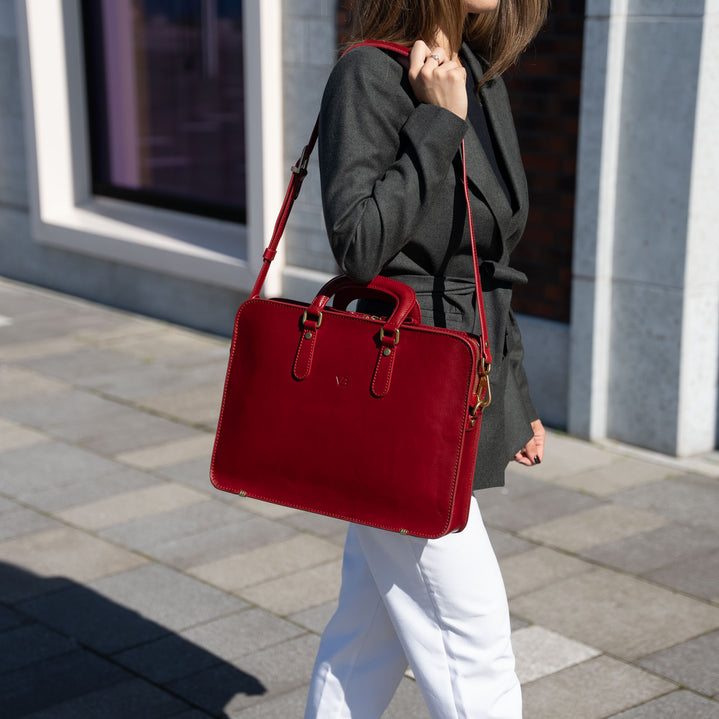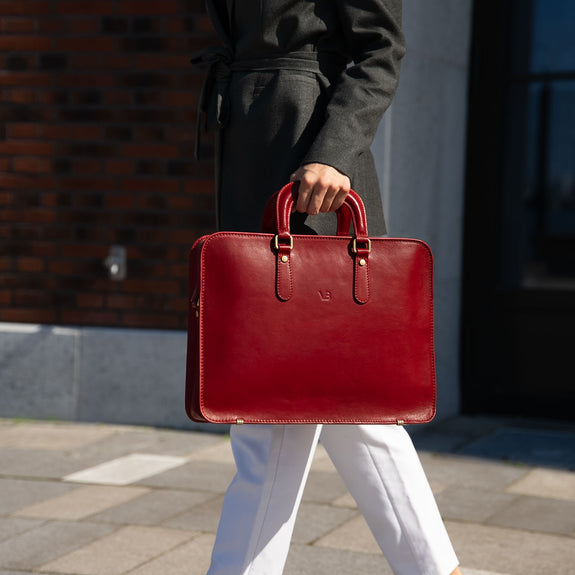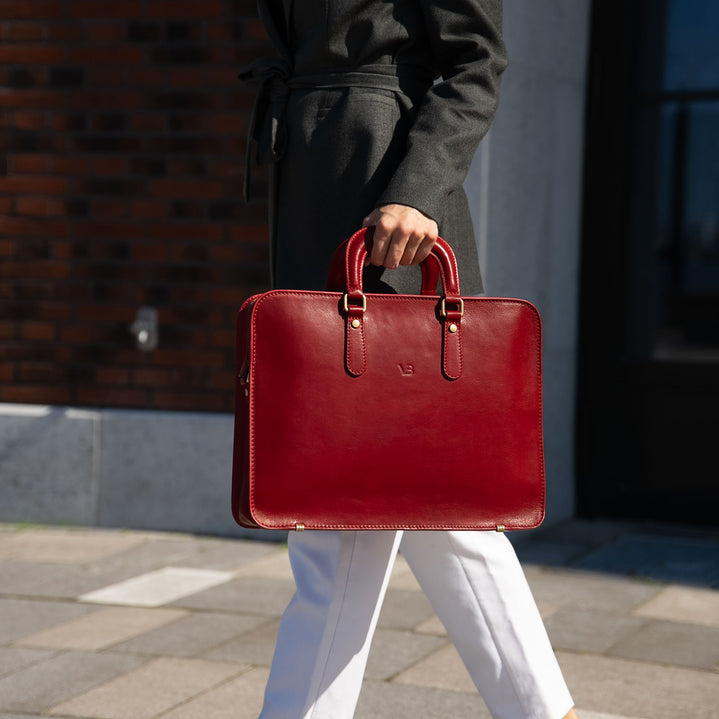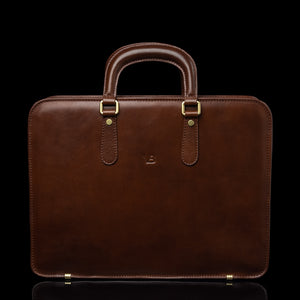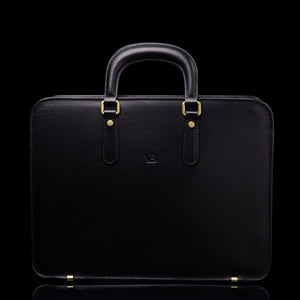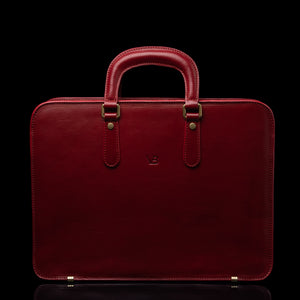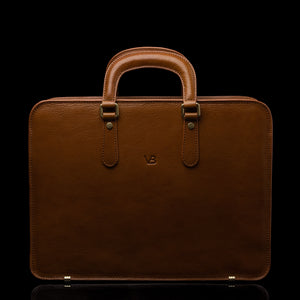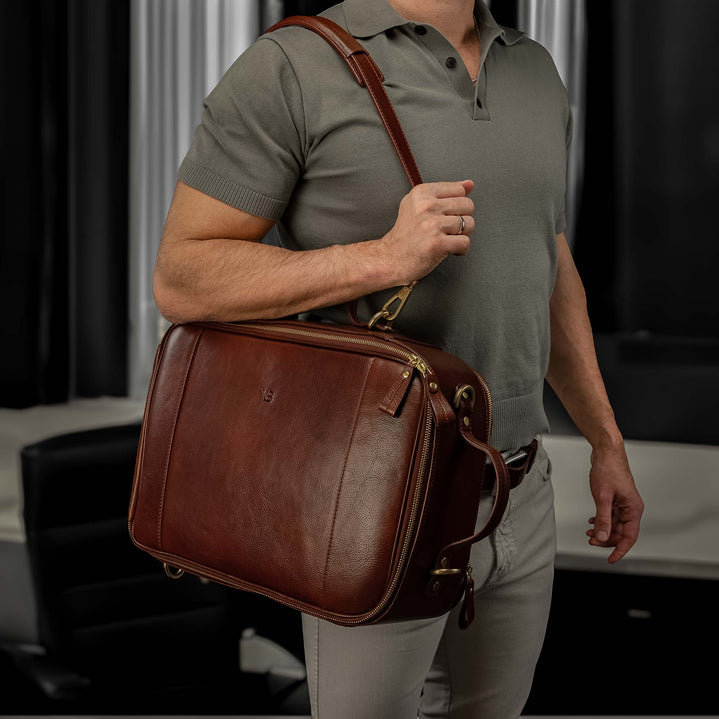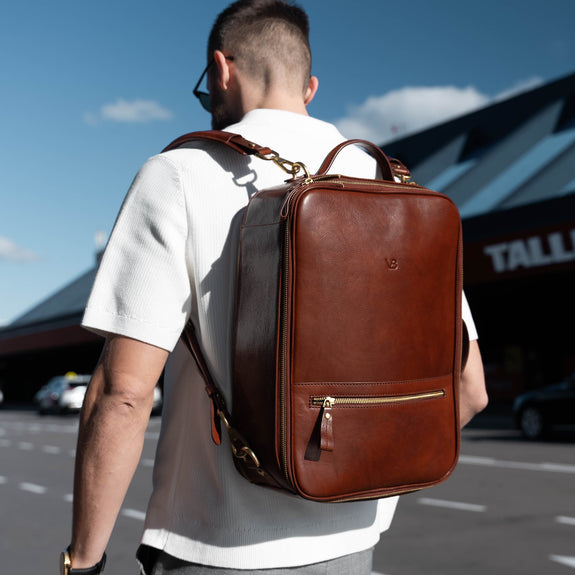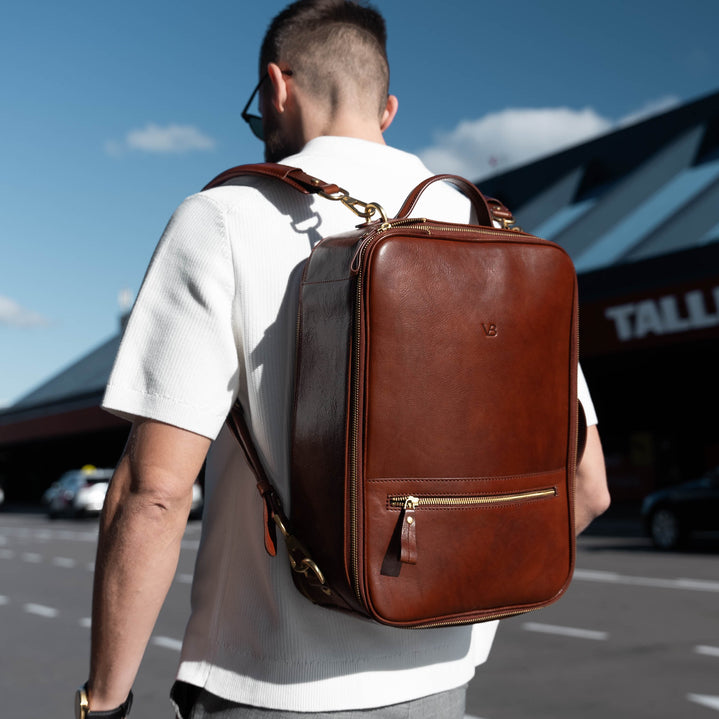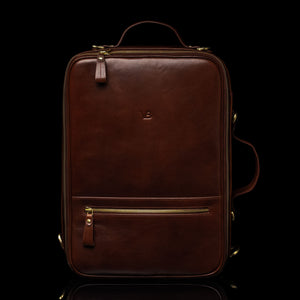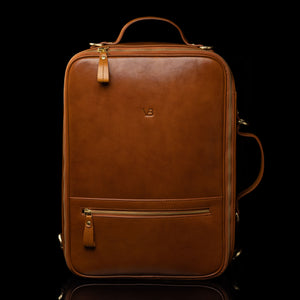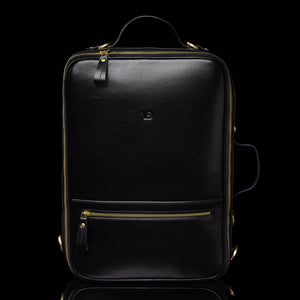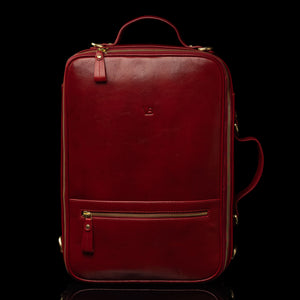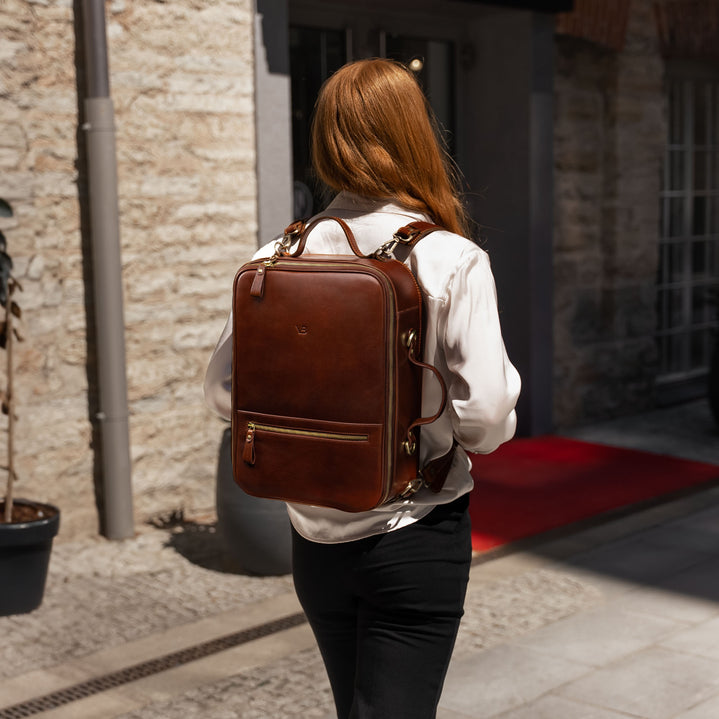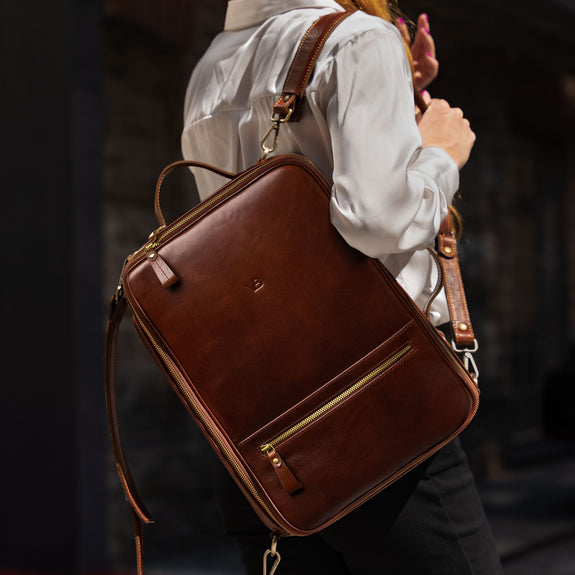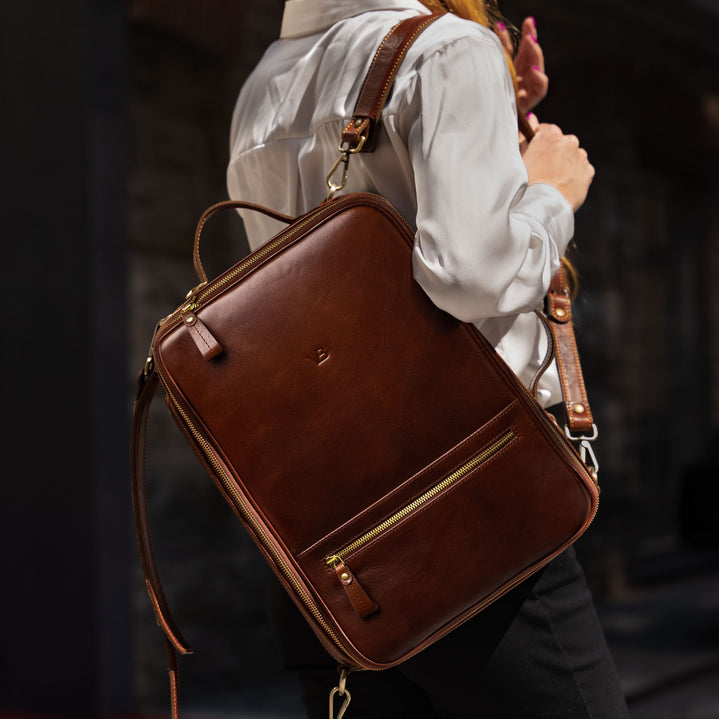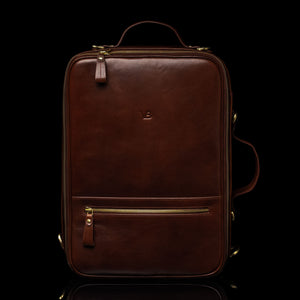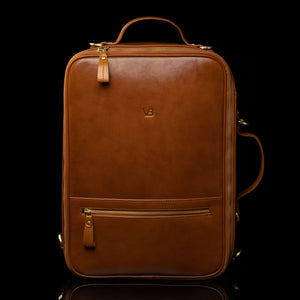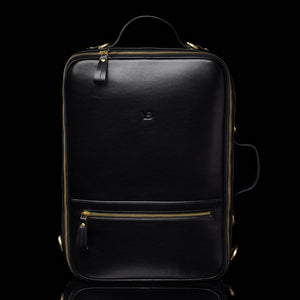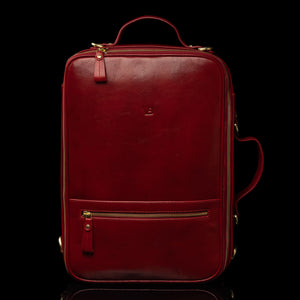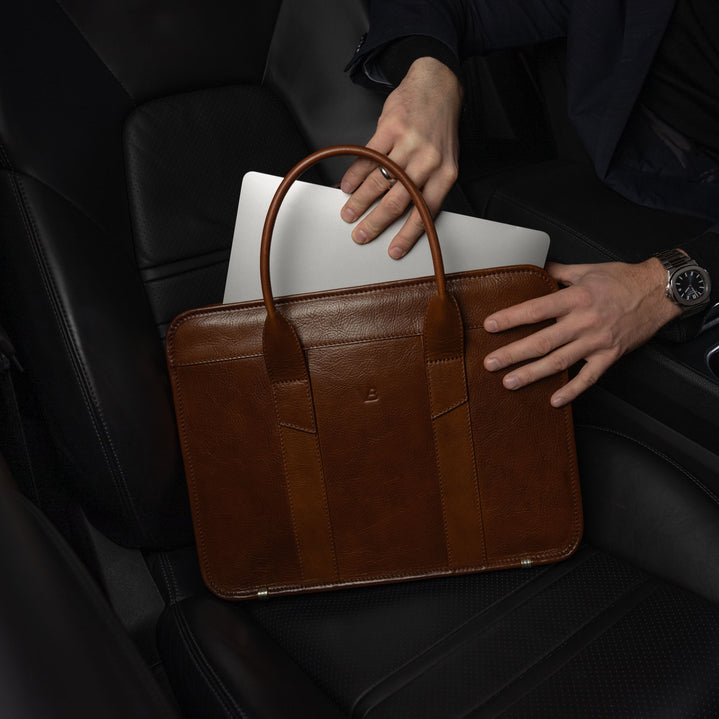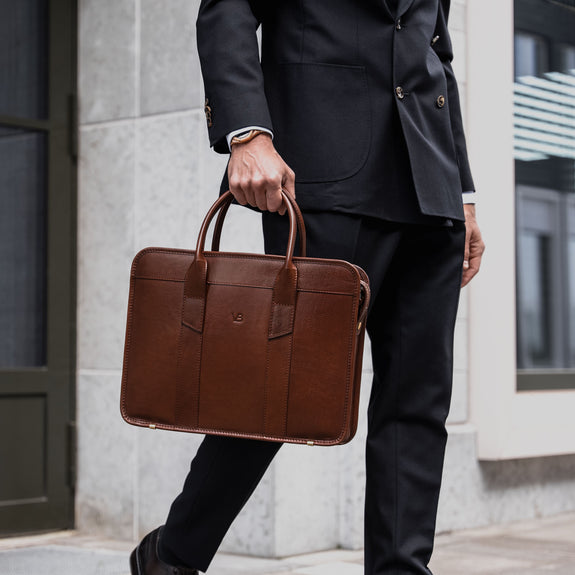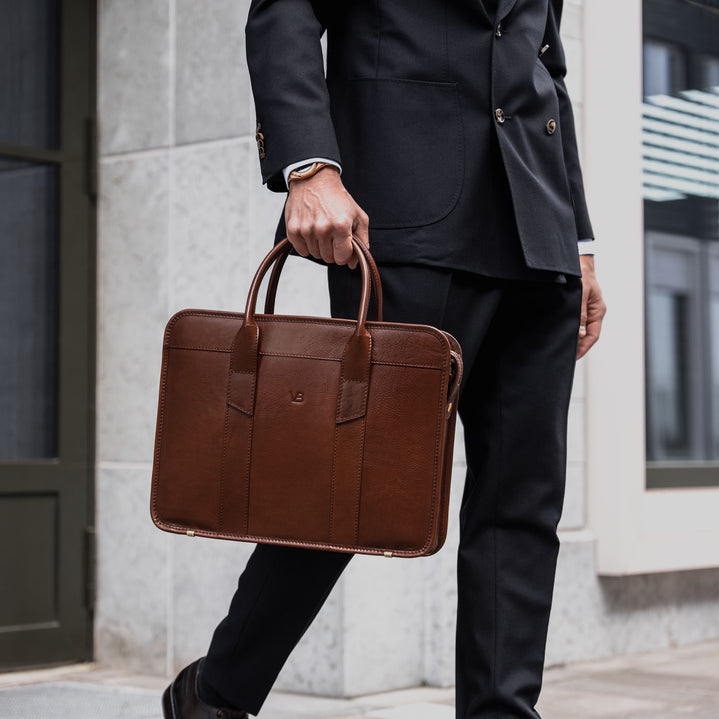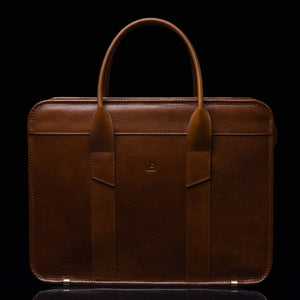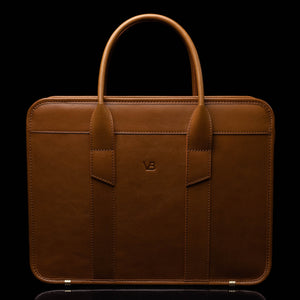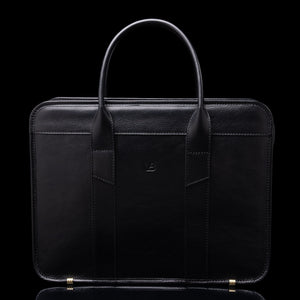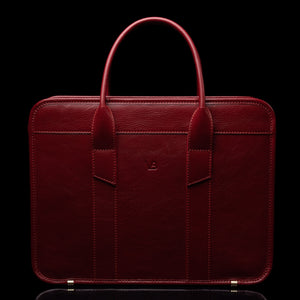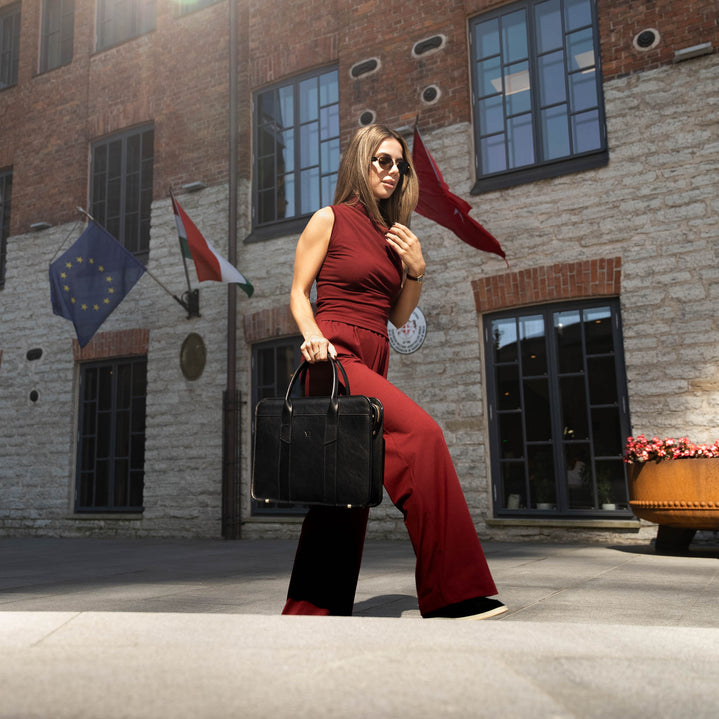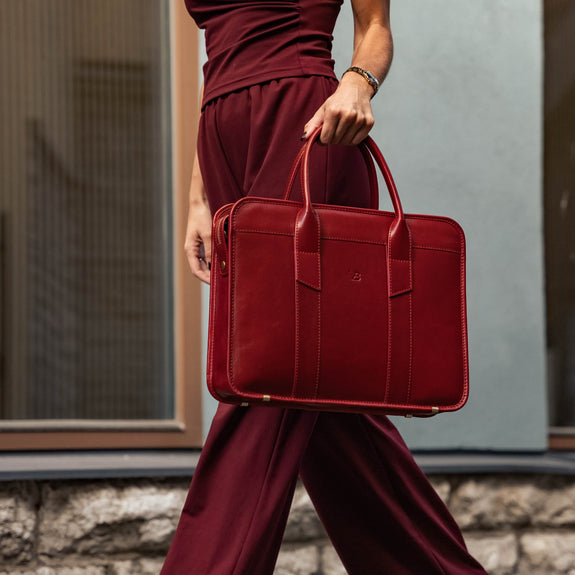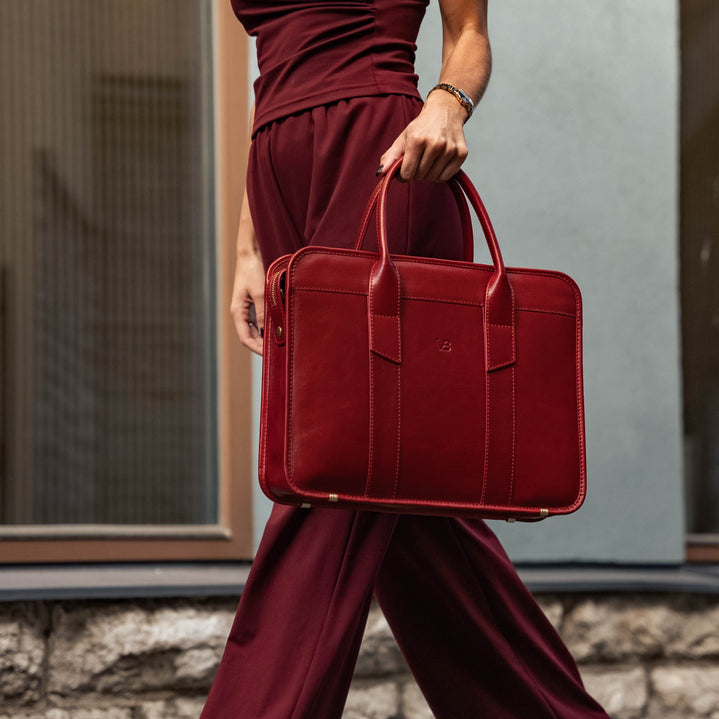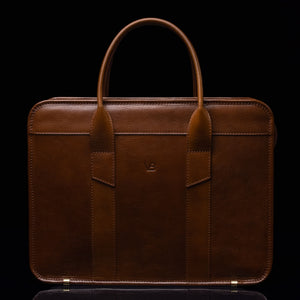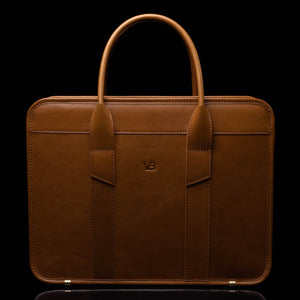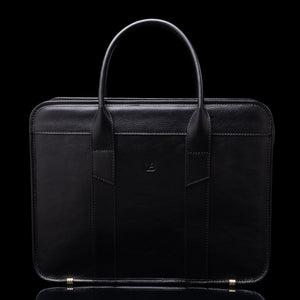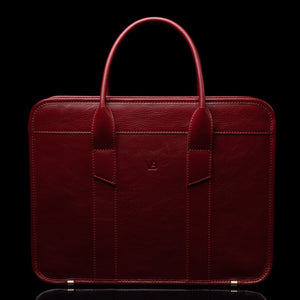Leather Laptop Bags for Accountants
Whether it's a busines casual day or a formal client meeting, these bags have you covered.
Handmade from the finest full-grain vegetable-tanned Italian leather.
No.1
Men's Leather Briefcase
$1,795
Elegance
Leather Tote Bag
$995
City
Leather Laptop Bag
$1,495
City
Women's Laptop Bag
$1,495
Essential
Modern Briefcase
$1,495
Liberty
Men's Leather Backpack
$1,495
Liberty
Women's Leather Backpack
$1,495
No.2
Leather Messenger Briefcase
$1,595
City Large
Leather Laptop Bag
$1,595
Elegant
Slim Leather Laptop Bag
$1,395
Elegant
Women's Laptop Briefcase
$1,395
10X
Leather Laptop Travel Bag
$1,695
10X
Women's Leather Laptop Travel Bag
$1,695
Exquisite
Slim Leather Laptop Briefcase
$1,495
Exquisite
Women's Laptop Bag
$1,495
AS FEATURED IN


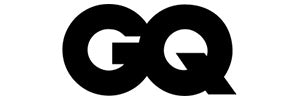

Why Choose Von Baer?

Expertly Handcrafted Leather Products

Full-Grain Vegetable-Tanned Italian Leather

Strong Hardware for a Lifetime of Use

Luxurious & Durable Cotton Lining

Personalize With Embossed Initials

Exquisitely Rich-Hued Leather for Refined Tastes
Buyer's Guide
How To Know The True Quality of the Leather?

You ever seen a bag that looks better five years in than it did new?
That’s full-grain vegetable-tanned leather doing its thing. The good stuff literally changes color with time - the oils oxidize from your hands, from air, from heat. Little marks build up, yeah, but that’s what gives it soul. They call it a living patina. That's why we use it here at Von Baer.
Now, the junky coated leathers? They fake that for about six months, then peel right where the shoulder strap rubs. Happens fast, especially near gussets. You want to check the pores - see them under angled light? Tight and dense? Good. Flat, plasticky, no texture? That’s been sanded down and sprayed over. Won’t breathe, so it ends up smelling like, I don’t know, melted plastic and cologne.
Ask if it’s "aniline," "semi-aniline," or "pigmented." Aniline’s what you want - just dyed, no fake topcoat. That’s why those old vintage bags look like they’ve lived stories. Oh - and thickness matters. Real full-grain runs 1.8 to 2.2 mm thick. That’s your sweet spot. Below that, corners wear out quick. Density above 0.65 g/cm³, by the way - anything lighter loses its backbone after two years.
Here’s the test: drag your finger across a corner. Feels a bit of resistance? That tiny grab means oil-infused hide - a 25-year investment, easy. If it’s slick, move on.
Patina equals credibility. If the finish never changes, it’s not really living with you - it’s pretending.
Learn more about leather quality here.
Next up: style vs. presence.
Is a Bag's Quiet Professionalism About Minimalism - Or Measured Detail?

You know that feeling when someone walks in with the right bag?
Not loud. Just right. It’s not about zero detail, it’s about restraint.
Every stitch counts. Look for 7-8 stitches per inch - that’s the old-school craftsmanship sweet spot. Less, and seams start pulling after a year; more, and it looks machine-perfect (aka fake).
Check the brass hardware too. Brushed, not polished. You don’t want reflections bouncing around the boardroom like disco lights. Handles? Wrapped over a firm core, symmetrical - it should hold 10 lbs easy, say, a full 16-inch MacBook Pro and a day’s worth of files. Shape should taper, kind of like a tailored suit does.
Logos? Skip them. That’s a rookie move. People who know, know. Someone across the table sees the stitching, the edge burnish tone - they can tell.
Do the "upright test." Put it down empty. Does it slump? Not good. That means the inner frame - probably a 1.5-2 mm fiberboard or bridle leather strip - is weak. And honestly, if your bag collapses, people notice before they even say hi.
Design discipline = professional discipline. When a bag holds its form, it’s saying what you don’t need to.
We compare a range of bags for investment bankers in this guide.
Next: ethics and feel - can both live in the same skin?
Can Ethical Leather Feel Truly Luxurious?

So, here’s the kicker: real ethical leather doesn’t come from "vegan" marketing slogans. It starts at the tannery. Chrome tanning? Fast, cheap, nasty - full of hexavalent chromium. Veg tanning? That’s the real deal. They soak hides in tree bark extracts - mimosa, chestnut, quebracho - for 30-45 days. Way slower, way stronger.
You’ll see it in the crease - chrome-tanned cracks, veg-tanned creases clean. If you see a real Italian tannery on a label, that’s a green flag. They document their supply chains, hide origin, all of it. And no, ethical leather doesn’t mean you’re hugging cows. Most hides come from meat by-products anyway - it’s just about doing the process clean.
Luxury feel? Still there. Finishing oils - lanolin or cod oil blends - make the leather soft but strong. Tensile strength north of 150 N/cm is what you want. Pinch it: if the color lightens then snaps back in seconds, congrats, that’s the top layer, not split junk.
Ask about pull-up leather. Oil content should sit at 8-12% of the hide’s mass. That’s the buttery stuff that shows tonal shifts when bent - hides scratches naturally.
Ethics amplify exclusivity. When fewer people do it right, the real thing gets rarer - and that’s what you’re buying.
Next: structure vs. flexibility.
How Much Structure Does a Daily-Use Bag Actually Need?

Okay, confession - I’ve owned both the tank-like lawyer briefcase and the floppy tote.
Both have trade-offs.
The really rigid ones? 2-3 mm Kydex or plywood cores. Look powerful in a courtroom but a nightmare on the subway. The soft ones? Light, sure, but saggy after a few months. The middle ground - semi-structured - that’s the sweet spot. Firm veg-tanned panels on the frame, softer chrome-free leather on the sides.
Double-gusset is key. One side for your tech, one for your papers. Divider should be leather-backed or 1680D ballistic nylon. Foam? Toss it. It disintegrates in heat. A solid base bracing keeps it from "belly-drooping" when half-full.
Specs to aim for: 3.5 lbs empty, base around 4 inches (10 cm) wide. Enough room for a 1-inch binder, laptop, charger, without bulging. If it weighs more than 5 lbs, it’s overbuilt - looks fancy but feels like gym equipment on your shoulder.
Load it up - five pounds of paper, laptop, whatever. Set it down. If the base caves or edges flare, that bag’s lying about its structure.
Structure supports perception. Your bag posture is your posture.
We curated a range of briefcases for wealth managers here.
Next: inside layout - where the real discipline shows.
What Does "Precision Bag Interior" Really Mean for Analytical Minds?

Ever open a bag and feel instantly calmer? That’s not magic - it’s layout logic. You want sections that make sense, not chaos pockets. Real briefcases line their sleeves with 0.5 mm microfiber suede or soft cotton canvas - gentle, moisture-absorbing, won’t scratch your laptop.
Checklist for the good stuff:
-
Main compartment padded with 5 mm high-density EVA foam.
-
Document sleeve slightly taller than A4 (13 x 9.5 in) so papers stay crisp.
-
Accessory pockets trimmed in leather (no fraying).
-
Pen loops reinforced, tension-tested for 10,000 insertions - so your Montblanc doesn’t wobble.
-
Key leash with nickel-plated clasp rated for 10 lbs tension.
Zippers should be YKK Excella or Raccagni #5. Cheap ones expand at 85°F and jam. Closures? Magnetic, not snap - should click under 45 dB (basically, a whisper). Loud snaps in a client meeting? Nope.
And static - that’s a weird one - avoid microfiber linings with more than 300V/m charge potential. Static grabs paper lint and toner dust like crazy. Beige or grey interiors win - better visibility in dim lighting when you’re digging for a flash drive mid-meeting.
Interior order = mental order. Calm bag, calm mind.
Work in private equity? See this range.
Next: can this thing survive airports and rain?
Will This Laptop Bag Survive Airports, Rainstorms, and Long Commutes Without Losing Its Poise?

Let’s be honest - travel wrecks most bags. Quality shows up when you’ve sprinted through TSA and it still looks composed. It’s all in the stitching. Saddle-stitched seams use 0.6 mm waxed linen thread, hand-done, locking each pass. If one thread breaks, nothing unravels. Machine chain-stitching? Snap one stitch and the whole line goes.
Edges are another weak point. Heat-sealed polyurethane? Cracks. You want hand-painted edges, three to five coats, sanded with 600-grit between each. Waterproof, flexible, pro.
Hardware metallurgy - don’t skip this. Zinc alloys corrode past 60% humidity. Solid brass or 304 stainless steel lasts decades. And rain tests? Wax pull-up hides keep 95% tensile strength after 10 wet-dry cycles. Smooth hides, not so lucky.
If you’re nerdy (welcome to the club), here’s your maintenance ratio: 1.5 g of mink oil per 100 cm², microfiber pad, stitch lines only. Skip silicon sprays; they suffocate pores. Recondition quarterly, or after 100 hours of light/rain exposure.
Luxury that travels quietly is real engineering. You don’t see the work, but you feel it.
We compare the best laptop bags here.
Next: will it still look right ten years down the road?
How Do You Know If It’ll Still Command Respect in a Decade?

You can tell who thought long-term by how a bag’s built to age. Modular hardware - screw-in rivets, replaceable brackets, detachable straps - means repair, not replacement. Anyone offering lifetime repair? They trust their work.
Geometry matters too. 1.6:1 width-to-height ratio - that’s the Golden Ratio magic. Anything else looks off. Avoid weird flap asymmetry or flashy contrast stitching; doesn’t age well with conservative suits.
Color? Go espresso brown or oxblood red. They mellow. Black hides marks but gets visible scratches under strong light. If your office uses 4000K LEDs, matte finishes will stay balanced - no glare.
And yeah, test swatches. Ask for a 2 x 2 inch sample. Rub it with a damp cloth, dry it off. If the tone evens back out, pigment’s solid. If not - cheap coating. Maintenance routine? Quarter-yearly. Use pH 5-6 leather conditioner, cotton pad, circles. Keeps moisture at 20-25% inside fibers - anything lower, it cracks.
Longevity authenticates status. Anything timeless saves you from buyer’s remorse next year.
Next: getting real about why you’re buying.
The Moment You Realize You’re Not Buying Just a Bag - You’re Investing in Continuity

Here’s the thing - at some point, this stops being about the bag. It’s about your sanity. You don’t want to think every morning, "Which bag do I bring?" You just want to grab it, walk out, done.
When your tools match your mindset - ordered, consistent, quietly sharp - everything else falls into place. It’s like your old Montblanc pen or your Omega Seamaster - it’s part of the rhythm now.
Full-grain craftsmanship, ethical tannery work, modular build - it’s all the same message: you’ve stopped buying disposable. You’re in the long game.
For the spec crowd: you’re after stress endurance above 10,000 load cycles, zippers lasting 50,000 pulls, edge-paint adhesion 98% bond after five years of conditioning. That’s heirloom-grade, not boutique impulse.
When every feature - from handle tension to edge tone - lines up with how you live, it stops being a bag. It becomes quiet proof you’ve figured out what matters.
Peace of mind is the real luxury. When every detail does its job, you finally stop thinking about the bag and start focusing on the work.
How Is Von Baer Leather Different?
Not all leather is the same.
Since 2015, we at Von Baer have dedicated ourselves to high-quality real leather.
Here's a 30-second summary of how to choose a better leather product:
- Leather comes in different grades: full-grain, top-grain, and split/bonded - which represent how much of the original product is used (less product used = cheaper).
- Full-grain is the best grade of leather you can buy: exceptionally durable, developing an elegant patina, and having that beautiful real leather smell.
- Cheaper grades are less durable, age poorly, and don't have that authentic scent.
- Leather is processed through "tanning", which makes it durable and water-resistant.
- The two main methods for this are "vegetable-tanning" and "chrome-tanning".
- Chrome tanning uses harsh chemicals that are bad for the environment and produce a worse quality leather.
- Vegetable tanning is the best method, being more eco-friendly, and producing leather with a better patina and scent.
That's why here at Von Baer, we only use full-grain vegetable-tanned Italian leather, sourced from the finest tanneries across Tuscany, Italy.
It ages beautifully over time, developing a unique patina, making it more durable and luxurious than lower-quality leather.
It's also why we developed the leather standards trademark Cuoio Superiore (meaning "superior leather" in Italian).
Learn more about Von Baer here.

